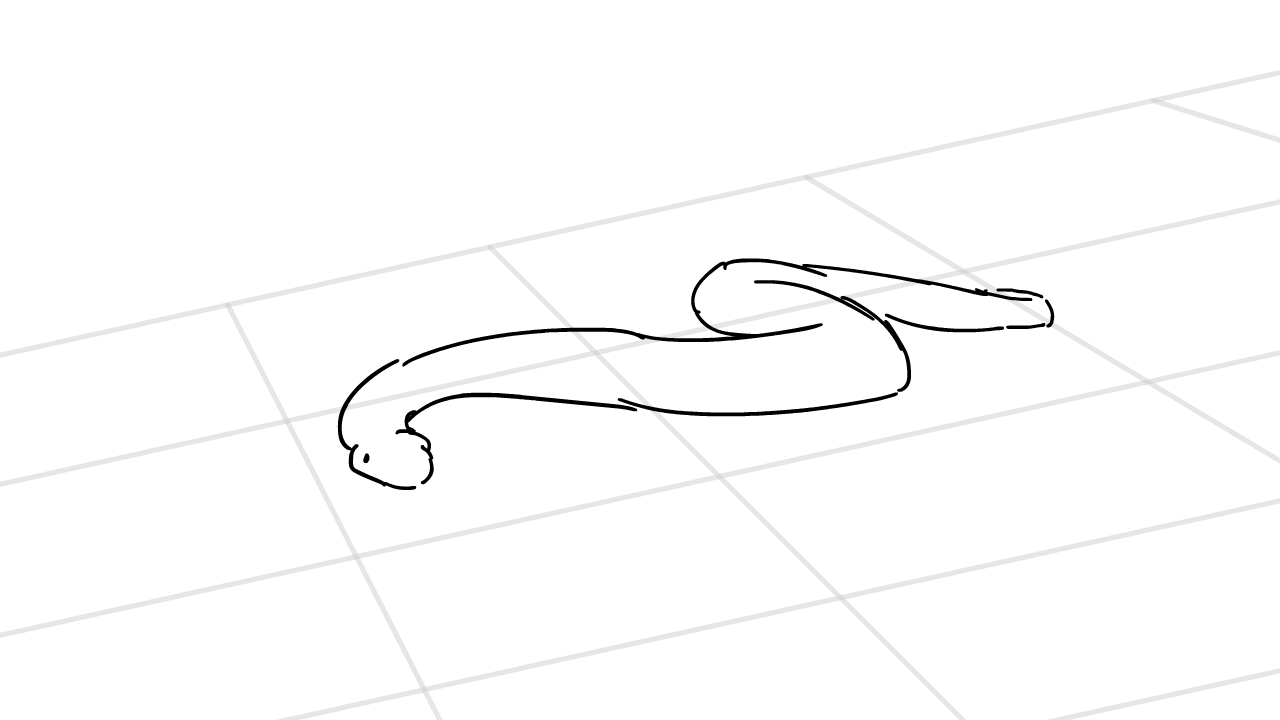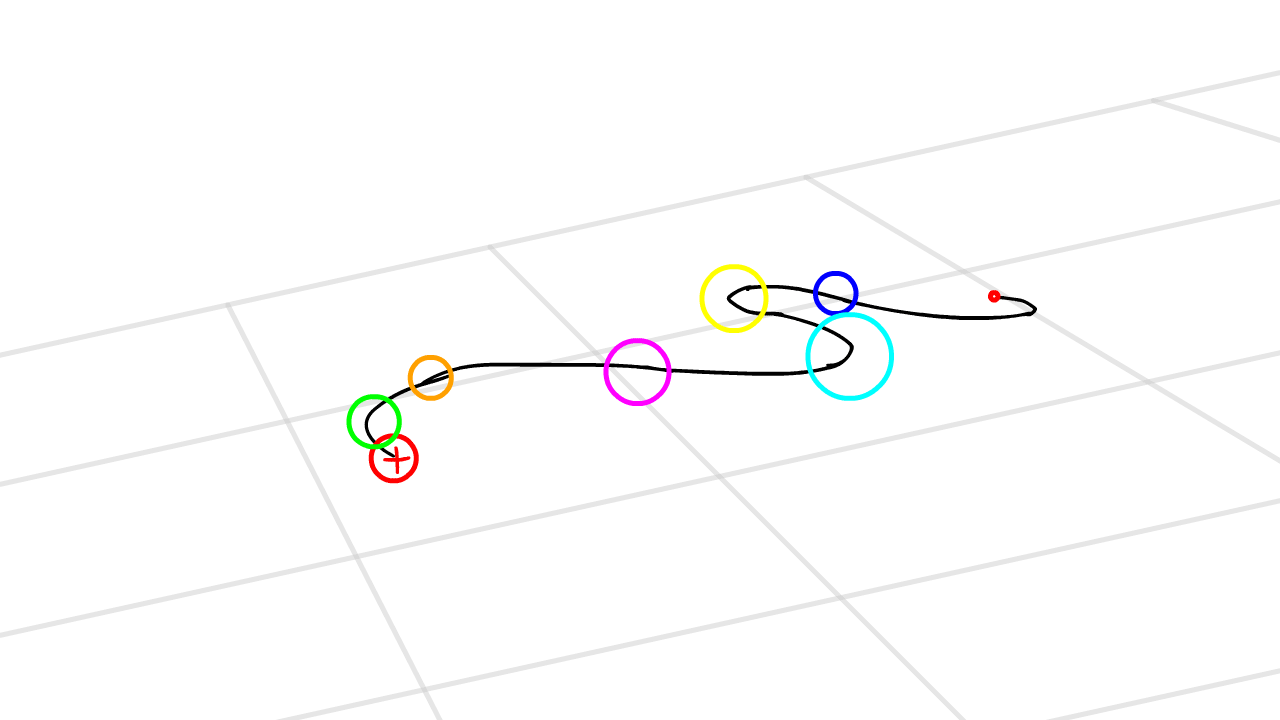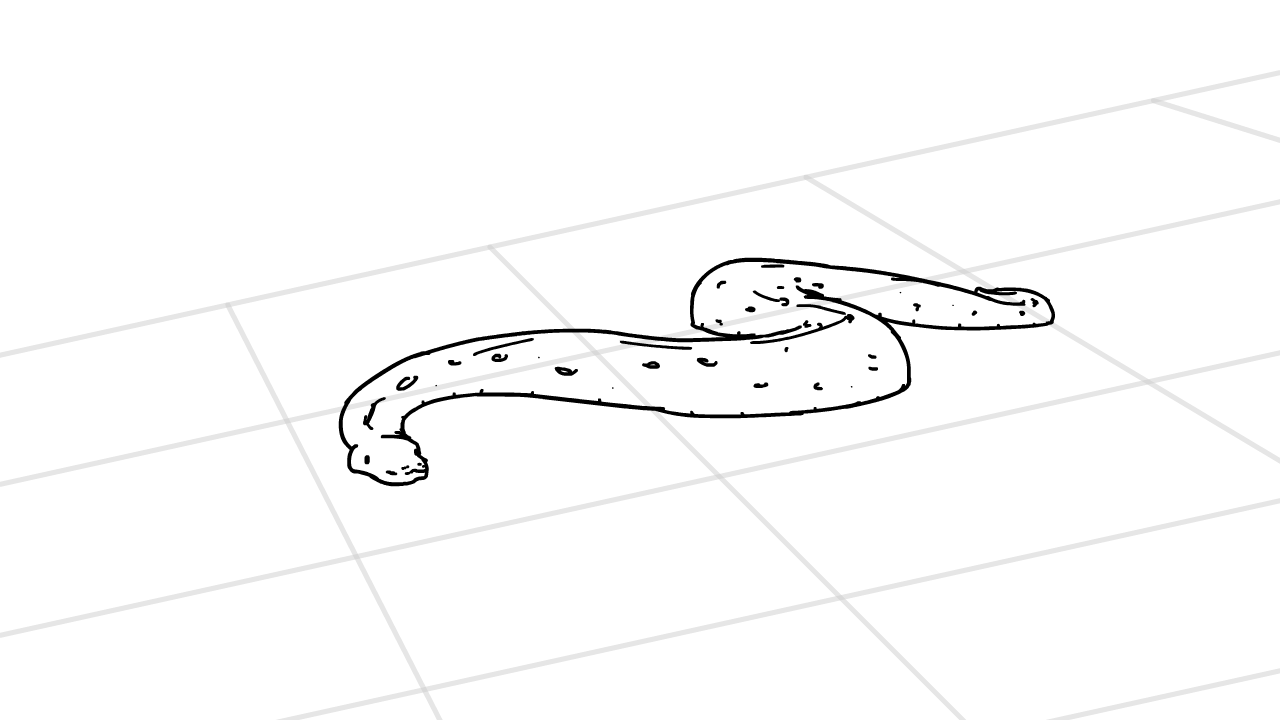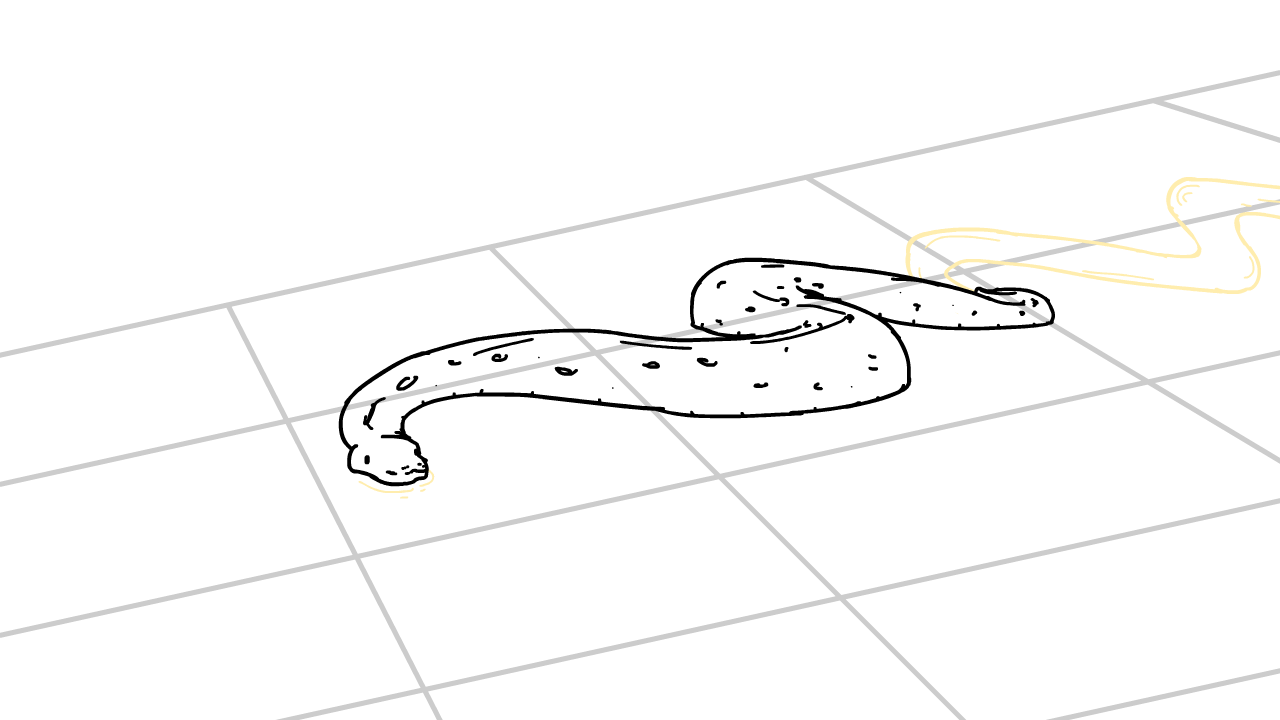Creature locomotion
Never animated animales before, but don't think on account of me doing it now, that it makes me a Furry
This is something quite new to me, that I have never even attempted before. This was creature animation. Not that I was apposed to it just never had a need to do it before. But to add challenge I didn't want to do something similar to anything I had done before. Basically no Legs or Arm movment as I already know how to do that. Snake however, now that's a whole other type of motion.

This is the very first sketch/draft of my slithering Snake animation. Basic ground plane more for my refrecne then to enhance the actual animation itself. It's only on basic frames at the moment no imbetweens or what not. Simple no detial, just to get a sense of motion of the snake and how it moves. Even as it was back then I still would say you can easily tell its a Snake. I used my main reference extensively the most for this stage of the animation, you'll see it in just a second. I took what I viewed as vital frames and sketched those to become this. I went from there.
Now we have the skeleton I made for it. I used the bright colours to help differentiate the segments and the line running down it to show the curves and or Arc and its pattern, motion and path. One thing I did learn is when animating a Snake, at least the entire body, it's just a set of stacked concave and convex curves in opposing order.


Here we have the second pass with all the detailed lines added on top of the spheres I had earlier. Think of it as me giving flesh to the segmented bones I had? Or like one of those really long ballons? When it's been blown up. I personally can clearly tell this is a Snake, as can all those I have shown. I don't even need to say a word. So in the sense it's realistic and lifelike enough in i'ts depiction of this type of animals movment that it's convincing. I think I can confidently say it is.
Lastly we have the little extra details I added. It may be hard to notice but I now added a actual track forming behind the Snake. Following along with its movments as you would expect. I noticed the Snake didn't look like it had weight and since they slither I can't just show it shifting that weight. So I thought a good way to do so is to show how its weight interacts with the environment. Hence the Snake track. It's basic but I belive it gets the job done.

Refrences
This served as the main reference I was using when making my creature animation study. You can really see how I used it to inform my initial sketch stage with how it moves and the camera position in relation to the Snake.
The second video source I used the most. whilst this is only from a top down perspective. You can see mow the muscles undulate to give grip and in turn forward momentum. It's this very grip that Snakes can make with their interlocking pattern of scales to create friction in conjunction with their tight and strong muscles undulating, and or streching/relaxing and contracting, moving down the body. In and out of convex and concave curves. This also coupled with thier constantly shifting weight, they shift their weight by raising little segments of thier body at times to redistribute their weight to other parts of their body.
Some more fo the science behind it, I'd give it a quick watch as it does much more of a concise and better job then I did explaining it in the last paragraph. Whilst it didn't imform the visuals, it was something that I had in mind while animating. Less the practicality of animating and more just me undestanding what a slither is, and how it allows for friction and subsequently movment.

So this is the first of the image references I used for my creature (Snake) animation (slithering) test/practice. Again this is from a top down perspective which I didn't do in mine. Since it wouldn't look as engaging but it still gives a good idea about what movment actually goes towards making a slither/undulation type motion. It also gives various types of Snakes and thier corresponding slithers, as in the Snake world there is more then one way to slither. The one I actually animated was the most traditional slither. Since that is what the layman is familiar with. On a side note in particular with this image as to how it informed my practice through research/reference. If you look at the finished animation you can see the snake leaving behind a trail, Snake tracks. I used the motion here to directly inform how those tracks would look. Cuase one would only ever see snake tracks from top down perspective. thusly it was my main help with the tracks specifically.
Lastly if you have ever seen any of the Eadweard Muybridge gifs/images then something like this may look familiar. Whilst not Eadweards work, it follows the same principle. Agian a top down perspective so it didn't help me as much as the videos did but agian it just helped solidify my understanding of a slither, or at least the most common type of slither. If you will allow me to break down the simple common slither for Snakes. At any given time the snake will have anywhere to two to three different u shape curves in it. Each leading into and acting as opposite from one another. They then in descending order follow the head as that is stretched fourth. Each curve is furthered down the body toward the tail where it eventually dissipates, and the cycle continues anew. Additionally I can't be seen here but for weight distribution like humans they hover certian parts of their body in the air to allow others to have a better weight distribution. This is rarly seen since we can only really see them on the gound. But it does happen. Not that it can be seen in these references though.

Relevance, reflection, application and future
The relevance being while I may not always be animating a snake or any creature that slithers and or undulates to move, but rather the capacity to look at a creature now and start to pull it apart in my mind in terms of the mechanics behind that creatures anatomy. Additionally the ability to look at examples or a set of photos of a creatures movments and learn the movments in a step by step fashion from their body.
reflection now. I really liked how this turned out. To start with this is one of my favourite tests I did for this whole unit. It certainly was something refreshing for me. Changes though? For one I would make the details I made for the scales more consistent. As they do vary from frame to frame. I would also make the movment even smoother and maybe slow it a tad? Not by much though. Additionally if I had the time I would of liked to of added things in the background and maybe even things for the snake to interact with and move around?
Next, application. Now obviously any time I animate anything that may slither or write or bend in some way like what I have just animated then I have experiance there. For those creatures or whatever that may require a diffrent body or shape? I can now scan a reference and analyse it almost like one would a machine. Just instead of mechanical it's biological. From that I can then go about animating it by breaking it's form down and building atop from that.
Lastly future. I do most definatly plan to be doing more creature animations, Hopefully pushing myself with longer and more complex and or detailed cratures. With them interacting within their enviroment. Just for now though I do plan to keep it simple. Still going at it all the less.


